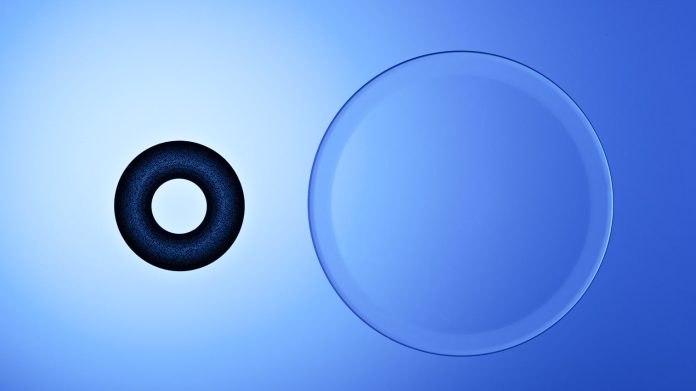Fourteen percent of the people in the world begin to have problems seeing fine print while reading around the age of 40. The most common present solution is a prescription for reading glasses or the purchase of nonprescription magnification glasses. Dr. John Vukich, a clinical adjunct professor in ophthalmology and vision sciences at the University of Wisconsin at Madison, and colleagues have developed a corneal implant that replaces reading glasses.
The advantages of the KAMRA inlay are convenience and reversibility in the event of poor performance or side effects. The corneal implant is a flexible doughnut-shaped disk that is 3.8 millimeters wide with a 1.6 millimeter hole in the center. The device is inserted in a pocket in the cornea and corrects the near vision for reading while allowing sight to remain the same at distances.
The device has been tested in 507 patients between 45 and 60 years of age in Asia, Europe, and the United States. The average correction of vision was to 20/40 vision in 83 percent of the users. This vision level is sufficient for passing a driving test and improves the user’s sight by three lines on the standard optician’s chart. Insertion of the inlay takes 10 minutes and can be done with topical anesthesia.
The device is presently being assessed by the FDA. The KAMRA device is being used now in Europe, Asia, and South America. Two U. S. manufacturers have competitive products in the FDA chain of approval. The obvious benefits of the KAMRA device are yet another victim of preferential approval of U. S. makers by the FDA.















